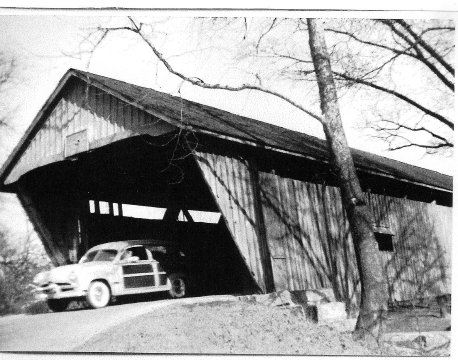
By Beth Clark
Tall tales of romantic liaisons, hauntings, and travelers’ odd encounters comprise a significant portion of the history of Indiana’s covered bridges. Nostalgia for our covered bridges is strong, especially considering that from 1820 until 1922 Indiana builders constructed as many as 600 covered bridges throughout the state.
Folklore also explains why a bridge was covered, including that its resemblance to a barn persuaded a horse to cross, or that its roof and sides removed the frightening sight and sound of rushing water. Practical truth is far less entertaining: the roof and siding on a bridge protected the wooden timbers and especially their joints from the weather. An uncovered bridge had a lifespan of only 10 to 12 years, while a covered one could last indefinitely.
Unfortunately, despite their coverings, very few of Indiana’s old bridges have endured. New roadways altered travel routes and neglected bridges fell into disrepair; or in other cases, large modern bridges simply replaced old structures. A number of bridges were victims of arson, a possible explanation for the burning of Fishers’ covered bridge that until 1957 provided the most direct route across the White River linking Fishers and Carmel.
Eller Bridge, also called Eller-Heady Bridge, was built in 1869 by Josiah Durfee and Company, lumber mill owners and bridge builders from Noblesville. Eller Bridge, named after one of Hamilton County’s first settlers, Joseph Eller and his family who owned land surrounding the bridge, spanned the White River along 116th Street.
The Eller Bridge burned in 1957, making travel between Fishers and Carmel difficult and disrupting commerce between the towns. A new modern bridge was not completed until 1959. The cause of the fire is undetermined; arson remains a possibility.
One is tempted to spin a tall tale regarding the burning of the bridge. It is notable that in 1954, the boundary of Clay Township moved from Range Line Road east to the White River, making Delaware Township one of the smallest in the state.
In 1957, the year the bridge burned, the metropolitan school district of Clay Township was organized, a process that had caused dissent between a faction in Fishers who wanted the Fishers’ school to join the Carmel system across the river, and a faction that wanted it to remain independent in Fishers. The demise of the bridge that impacted ties between Fishers and Carmel for two years certainly reinforced Fishers’ independence.




